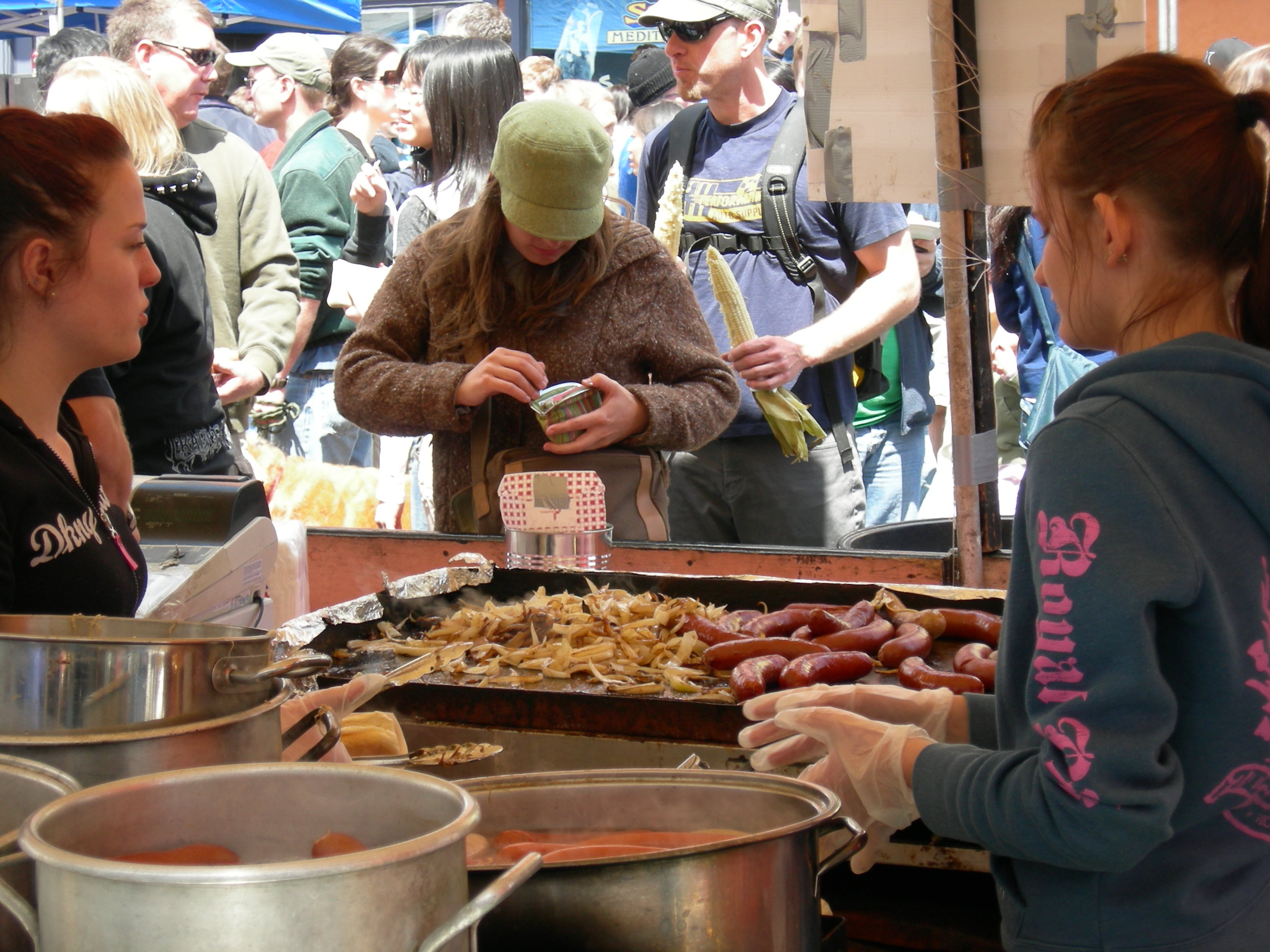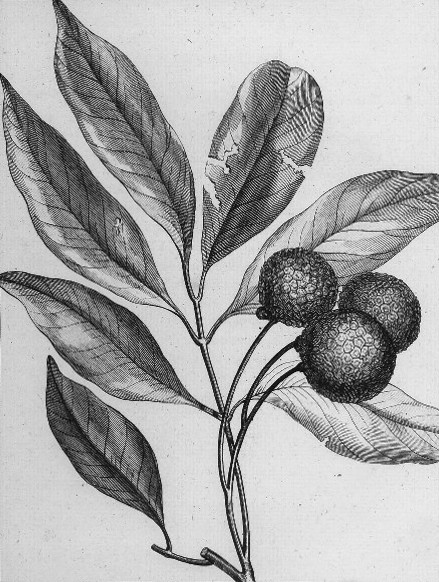|
Almond Tofu
Almond tofu () is a soft, jellied dessert made of apricot kernel milk, agar, and sugar popular throughout East Asia. The name "tofu" here refers to "tofu-like solid"; soy beans, which are the main ingredient of tofu, are not used, nor coagulated as soybeans would be to make tofu. This naming convention is also seen in other East Asian dishes, such as Chinese () and Japanese . Apricot kernel milk is often confused with almond milk, as apricot kernel itself is often confused with almond. Preparation In the traditional recipe, the primary flavoring agent is apricot kernels, soaked and ground with water. The mixture is strained, sweetened, and heated with a gelling agent (usually agar). When chilled, the apricot kernel milk mixture solidifies into the consistency of a soft gelatin dessert. Although the agar-based recipe is vegan, there are numerous nontraditional recipes that are not. Most are based on dairy products and a small amount of flavored extract. Gelatin is also a comm ... [...More Info...] [...Related Items...] OR: [Wikipedia] [Google] [Baidu] |
Pudding
Pudding is a type of food which can either be a dessert served after the main meal or a Savoury (dish), savoury (salty or sweet, and spicy) dish, served as part of the main meal. In the United States, ''pudding'' means a sweet, milk-based dessert similar in consistency to egg-based custards, Bird's Custard, instant custards or a mousse, often commercially set using cornstarch, gelatin or similar coagulating agent. The modern American meaning of pudding as dessert has evolved from the original almost exclusive use of the term to describe savoury dishes, specifically those created using a process similar to that used for sausages, in which meat and other ingredients in mostly liquid form are encased and then steamed or boiled to set the contents. In the United Kingdom, Republic of Ireland, Ireland and some Commonwealth of Nations, Commonwealth countries, the word ''pudding'' is used to describe sweet and Savoury (dish), savoury dishes. Savoury puddings include Yorkshire pudding ... [...More Info...] [...Related Items...] OR: [Wikipedia] [Google] [Baidu] |
Food Stall
A food boothalso called a food kiosk, food stand, food stall or temporary food service facilityis a temporary structure used to prepare and sell food to the general public, usually where large groups of people are situated outdoors in a park, at a parade, near a stadium, or otherwise. Sometimes the term also refers to the business operations and vendors that operate from such booths. Background There is evidence to suggest that certain foods have either originated from, or gained in popularity through, food booths.A confectionery booth is depicted in an etching by Christoph Weigel (1654-1725) From One Hundred Fools c.1700. For example, the popularity of the ice cream cone in North America is attributed to the St. Louis World's Fair in 1904. According to legend, an ice cream seller had run out of clean dishes, and could not sell any more ice cream. Next door to the ice cream booth was the waffle booth, unsuccessful due to intense heat. The waffle maker offered to make cones by ro ... [...More Info...] [...Related Items...] OR: [Wikipedia] [Google] [Baidu] |
Puddings
Pudding is a type of food which can either be a dessert served after the main meal or a savoury (salty or sweet, and spicy) dish, served as part of the main meal. In the United States, ''pudding'' means a sweet, milk-based dessert similar in consistency to egg-based custards, instant custards or a mousse, often commercially set using cornstarch, gelatin or similar coagulating agent. The modern American meaning of pudding as dessert has evolved from the original almost exclusive use of the term to describe savoury dishes, specifically those created using a process similar to that used for sausages, in which meat and other ingredients in mostly liquid form are encased and then steamed or boiled to set the contents. In the United Kingdom, Ireland and some Commonwealth countries, the word ''pudding'' is used to describe sweet and savoury dishes. Savoury puddings include Yorkshire pudding, black pudding, suet pudding and steak and kidney pudding. Sweet puddings include bread p ... [...More Info...] [...Related Items...] OR: [Wikipedia] [Google] [Baidu] |
Hong Kong Cuisine
Hong Kong cuisine is mainly influenced by Cantonese cuisine, European cuisines (especially British cuisine) and non-Cantonese Chinese cuisines (especially Hakka, Teochew, Hokkien and Shanghainese), as well as Japanese, Korean and Southeast Asian cuisines, due to Hong Kong's past as a British colony and a long history of being an international port of commerce. Complex combinations and international gourmet expertise have given Hong Kong the labels of "Gourmet Paradise" and "World's Fair of Food".Sterling, Richard. Chong, Elizabeth. Qin, Lushan Charles 001(2001). ''World Food Hong Kong''. Hong Kong: Lonely Planet Publishing. . Background Modern Hong Kong has a predominantly service-based economy, and restaurant businesses serve as a main economic contributor. With the fourth-densest population per square metre in the world and serving a population of 7 million, Hong Kong is host to a restaurant industry with intense competition. Due to its small geographical size, Hong Kong ... [...More Info...] [...Related Items...] OR: [Wikipedia] [Google] [Baidu] |
Dim Sum
Dim sum () is a large range of small Chinese dishes that are traditionally enjoyed in restaurants for brunch. Most modern dim sum dishes are commonly associated with Cantonese cuisine, although dim sum dishes also exist in other Chinese cuisines. In the tenth century, when the city of Canton (Guangzhou) began to experience an increase in commercial travel, many frequented teahouses for small-portion meals with tea called "'' yum cha''" ( brunch). "''Yum cha''" includes two related concepts. The first is " jat zung loeng gin" (), which translates literally as "one cup, two pieces". This refers to the custom of serving teahouse customers two delicately made food items, savory or sweet, to complement their tea. The second is ''dim sum'', which translates literally to "touch the heart", the term used to designate the small food items that accompanied the tea. Teahouse owners gradually added various snacks called dim sum to their offerings. The practice of having tea with dim su ... [...More Info...] [...Related Items...] OR: [Wikipedia] [Google] [Baidu] |
Cantonese Cuisine
Cantonese or Guangdong cuisine, also known as Yue cuisine ( zh, t=廣東菜 or zh, labels=no, t=粵菜), is the cuisine of Cantonese people, associated with the Guangdong, Guangdong province of China, particularly the provincial capital Guangzhou, and the surrounding regions in the Pearl River Delta including Hong Kong and Macau.Hsiung, Deh-Ta. Simonds, Nina. Lowe, Jason. [2005] (2005). The food of China: a journey for food lovers. Bay Books. . p17. Strictly speaking, Cantonese cuisine is the cuisine of Guangzhou or of Cantonese speakers, but it often includes the cooking styles of all the speakers of Yue Chinese languages in Guangdong. The Teochew cuisine and Hakka cuisine of Guangdong are considered their own styles. However, scholars may categorize Guangdong cuisine into three major groups based on the region's dialect: Cantonese, Hakka and Chaozhou cuisines. Neighboring Guangxi's Guangxi cuisine, cuisine is also considered separate despite eastern Guangxi being considered ... [...More Info...] [...Related Items...] OR: [Wikipedia] [Google] [Baidu] |
Beijing Cuisine
Beijing cuisine, also known as Jing cuisine, Mandarin cuisine and Peking cuisine and formerly as Beiping cuisine, is the local cuisine of Beijing, the national capital of China. Background As Beijing has been the capital of China for centuries, its cuisine is influenced by culinary traditions from all over China, but the style that has the greatest influence on Beijing cuisine is that of the eastern coastal province of Shandong cuisine, Shandong.Wang, Juling, ''Famous Dishes of Famous Restaurant in Beijing'', Golden Shield Publishing House in Beijing, December, 2000, Xu, Chengbei, ''Ancient Beijing, Customs of the General Populace of Ancient Beijing'', Jiangsu Fine Arts Publishing House in Nanjing, September, 1999, Hua Mengyang and Zhang Hongjie, ''Lives of the residents of Ancient Beijing'', Shandong Pictorial Publishing House in Jinan, June, 2000, Du, Fuxiang and Guo, Yunhui, ''Famous Restaurants in China'', China Tourism Publishing House in Beijing, 1982 Beijing cuisine has i ... [...More Info...] [...Related Items...] OR: [Wikipedia] [Google] [Baidu] |
Chinese Desserts
Chinese desserts () are sweet foods and dishes that are served with tea, along with meals"Chinese Desserts." . Accessed June 2011. |
List Of Desserts
A dessert is typically the sweet Course (food), course that, after the entrée and main course, concludes a meal in the culture of many countries, particularly western world, Western culture. The course usually consists of sweet foods, but may include other items. The word "dessert" originated from the French language, French word ''desservir'' "to clear the table" and the negative of the Latin language, Latin word ''servire''. There are a wide variety of desserts in western cultures, including cakes, cookies, biscuits, gelatins, pastry, pastries, ice creams, pies, puddings, and candy, candies. Fruit is also commonly found in dessert courses because of its natural sweetness. Many different cultures have their own variations of similar desserts around the world, such as in Russia, where many breakfast foods such as blini, oladyi, and syrniki can be served with honey and jam to make them popular as desserts. By type Brand name desserts A * Angel Delight B * Bird's Custard * Bompa ... [...More Info...] [...Related Items...] OR: [Wikipedia] [Google] [Baidu] |
List Of Chinese Desserts
Chinese desserts are sweet foods and dishes that are served with Chinese tea, tea, along with meals"Chinese Desserts." . Accessed June 2011. Chinese desserts A * ''Xingren doufu'' 杏仁豆腐 -- a curdled dessert often translated as "almond tofu", despite actually being made from ...[...More Info...] [...Related Items...] OR: [Wikipedia] [Google] [Baidu] |
Crème Caramel
Crème caramel (), flan, caramel pudding, condensed milk pudding, or caramel custard is a custard dessert with a layer of clear caramel sauce. History Custard has a long documented history, but crème caramel or flan in its modern form, with soft caramel on top, and prepared and cooked using a bain-marie, is first documented in by Jean-Baptiste Reboul, Jean Baptiste Reboul published in 1897. In the late 20th century, crème caramel was common in European restaurants. The food historian Alan Davidson (food writer), Alan Davidson speculates that this may have been because the dish could be prepared in bulk, in advance. Etymology In this context, in French means 'custard'. The names (French) and (Spanish) allude to the custard being turned over to be served. Both ''crème caramel'' () and ''flan'' are French names; however, ''flan'' has come to have different meanings in different regions. In Spanish-speaking countries (and often in the United States), crème caramel is known ... [...More Info...] [...Related Items...] OR: [Wikipedia] [Google] [Baidu] |
Lychee
Lychee ( , ; ''Litchi chinensis''; ) is a monotypic taxon and the sole member in the genus ''Litchi'' in the soapberry family, Sapindaceae. There are three distinct subspecies of lychee. The most common is the Indochinese lychee found in South China, Malaysia, and northern Vietnam. The other two are the Philippine lychee (locally called ''alupag'' or ''matamata'') found only in the Philippines and the Javanese lychee cultivated in Indonesia and Malaysia. The tree has been introduced throughout Southeast Asia and South Asia. Cultivation in China is documented from the 11th century. China is the main producer of lychees, followed by India, Vietnam, other countries in Southeast Asia, other countries in South Asia, Madagascar, and South Africa. A tall evergreen tree, it bears small fleshy sweet fruits. The outside of the fruit is a pink-red, rough-textured soft shell. Lychee seeds contain methylene cyclopropyl glycine which has caused hypoglycemia associated with outbreaks of e ... [...More Info...] [...Related Items...] OR: [Wikipedia] [Google] [Baidu] |










